May 16, 2024 | 12:20 GMT +7
May 16, 2024 | 12:20 GMT +7
Hotline: 0913.378.918
May 16, 2024 | 12:20 GMT +7
Hotline: 0913.378.918
Dr. Tran Minh Hai, an expert in collective economy, has many years working as the Director of the Center for Cooperative Development. He is currently the Vice Rector of the School of Management for Agriculture and Rural Development II (Ministry of Agriculture and Rural Development). Vietnam Agriculture News has recently had an interview with Dr. Tran Minh Hai in hope of giving an expert perspective to our viewers.

“Agroproduction at present requires cooperatives to be associated with large raw material areas to improve agro-product quality, thus creating favorable conditions for enterprises to sign cooperation contracts.” Photo: LHV.
Recently, the Central Executive Committee has just issued the 5th Resolution, Term XIII (Resolution No. 20-NQ/TW dated June 16, 2022) on continuing to innovate, develop, and improve the efficiency of collective economy in the new period.
The resolution once again affirms the position of collective economy as an inevitable trend. And Central Committee’s perspective of guidance throughout is that "collective economic development must respect collective economy’s nature, values and operating principles while being in compliance with the socio-economic conditions and characteristics of each locality, area, region and the country as a whole.” What are your expectations of this new resolution?
My expectations for the success of Resolution No. 20 are high, and the reason is because of the many new things in it.
First of all, Resolution No. 20 clearly shows the position, role and responsibilities of Party committees and authorities in the sense of properly and fully being aware of the importance of collective economy in the socialist-oriented market economy, showing belief in the sustainable development of cooperative model in the future. The Resolution also affirmed that it is necessary to strengthen communication work and awareness education for party members, especially leaders of state agencies.
Another thing to mention is that Resolution No. 20 provides a view on the development of collective economy that attaches importance to the interests of its members, cooperation and mutual assistance towards the enrichment of each member and group. This is a huge difference in perception compared to the previous Resolutions.
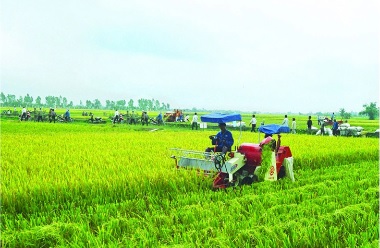
Expectations are high for the success of Resolution No. 20 because there are many new points compared to the previous Resolution XIII. Photo: LHV.
This resolution also sets the goal of developing cooperative members, the number of cooperatives and cooperative unions as well as the quality of future collective economic models. It requires the whole political system, committees and authorities’ joint effort to implement and achieve this goal.
There are other new points on development policies, policies on perfecting mechanisms, and policies to encourage and support the development of collective economy. The resolution clearly states policies to develop human resources, land, finance and credit. At the same time it integrates other policies of the Government such as policy on science and technology and marketing ability, all for the goal of developing cooperative.
I believe these new points will create a legal corridor, making it very easy for ministries, central agencies and provincial governments to implement cooperative development support policies.
It is obvious that collective economy has experienced major changes, but there are still many bottlenecks and barriers. Do you have any recommendations for the Central Government so that the role of the collective economy can be better promoted?
Based on the reality of cooperative development and the goals of Resolution No. 20, I personally think many synchronous solutions are required in order to gain efficiency that approaches the world’s cooperative development progress and achieve the goal of "using the improvement of rural farmers’ quality of life as an important measure of collective economic development”.
Resolution No. 20 clearly states this goal: Developing cooperatives to gain 45,000 cooperatives and 8 million members by 2030. The number of agricultural cooperatives currently accounts for more than 65% of the total number of cooperatives of all types. If we calculate in a mechanical sense, in the next 7 years we need to develop 3,500 agricultural cooperatives to achieve the set target. Therefore we need to implement a number of solutions:
The first solution is to focus on developing cooperative models in the Mekong Delta, the Southeast, and the Central Highlands - regions where the number of agricultural cooperatives is low compared to normal. They are going to be the three key agricultural economic regions in the near future.
In the process of implementing Resolution No. 20, it is necessary to set specific goals to strive for, but only to encourage and supplement targets on increasing the number of members and improving the quality and quantity of services in the cooperative.
Secondly, there should be more resolutions on credit support for cooperatives. Many countries around the world have applied a Central-level Resolution requiring the State Banks and Joint Stock Commercial Banks to reserve a source of funding for cooperatives to borrow at a preferential interest rate of only 50% compared to the preferential interest rate in the market.
There is actually a Cooperative Development Support Fund in Vietnam at the moment, but the implementation still has limitations. The central government should issue a resolution to assign banks to lend loans to help cooperatives develop services. Only by that method may the management generate personnel. There would be professionalism, and cooperatives would have to make a mortgage like borrowing from a bank as normal. The cooperative will take care of its own collateral, but the State should provide support in terms of interest rate. This is a potential direction to erase the current problem in rural areas where 70-80% of farmers lacking capital have to buy agro-input materials while accepting debt.
Thirdly, there should be adjustments in tax policies for cooperatives. In some countries around the world, cooperative business and corporate income VAT are usually 0% or very low.
As for Vietnam’s current tax policy, cooperatives, in addition to paying normal VAT like businesses, have to pay an income tax of 20% of profits. The tax is even levied on both semi-processed and processed agro-products at a rate of 10%. This is one of the reasons why Vietnamese agro-products are usually only sold raw, leading to little opportunity to improve the commodity chain value and create jobs in rural areas.
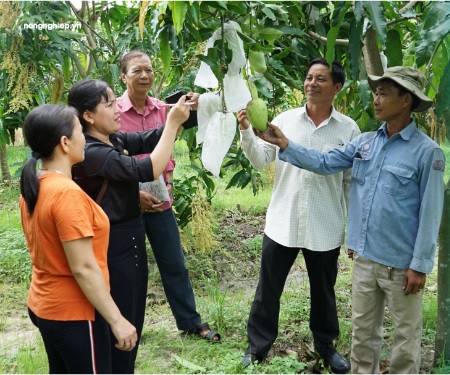
Investments in cooperatives will become assets of the community, and gradually the community will develop into partners and counterbalance with businesses to improve farmers' incomes. Photo: LHV.
Fourthly, the Government needs to establish a team of professional cooperative consultants from central to provincial levels. Looking to countries like Thailand, the Ministry of Agriculture and Cooperatives has approximately 3,000 cooperative consultants. Similarly in Japan, before 2010, the Central Union of Agricultural Co-operatives (JA-ZENCHU) had approximately 3,500 professional consultants. At present the qualifications of the Board of Directors of the cooperatives have been raised to college, university, and master's degrees, but their number of cooperative experts is still more than 2,000. Making such a comparison is to make us understand that the force knowledgeable about collective economy and cooperatives in Vietnam is still very small in number (below 1,000).
Lastly, the Government needs to allocate funding to support cooperatives in developing infrastructure for preliminary processing and processing in order to increase the possibility of realizing a large raw material area, increase the ability to create a production and agro-product consumption link between cooperatives and enterprises.
How do you assess the lessons of collective economy and cooperative in other countries? How would Vietnam apply those lessons in practice?
Regarding the lessons of cooperative development in some countries around the world, I believe there are some that we can study deeper and apply to practical conditions in Vietnam.
Firstly, regarding the trend of developing collective economy, cooperatives of most countries have gone through similar stages and made good progress. They follow the path of assigning quotas to develop numbers, and after a period of self-competitive, cooperatives group into larger organizations, reducing the number and increasing the scale.
Let’s take Japan for example. In 1947 there were 12,000 cooperatives, each with about 125 members, by 2021 it decreased to over 600 cooperatives, but the number of members increased to 14,000 people/cooperative. Thailand and other developed countries pursuing collective economy and cooperatives have walked the same path.
Our country is at an early stage of cooperative development compared to other countries in the world. Small-scale cooperatives are still increasing in number but will slowly merge. The number of people joining cooperatives is also on the rise, setting the foundation to improve the efficiency of cooperative activities. We are gradually approaching and taking advantage of the scale factor, promoting the nature of cooperatives which is "buying together, selling together, increasing profit together".
The second lesson is the implementation of development support policies through cooperatives. Investments in cooperatives will become assets of the community and gradually the community will develop into partners and counterbalance with businesses to improve farmers' incomes, gradually narrowing the income gap between rural areas and urban areas.
As for the third lesson, the development of cooperative models and improving the quality of life of farmers cannot be realized without the supporting role of the State. Countries in the world use the cooperative model to support commodity chains which leads to an improvement in farmers’ livelihood.
We must do the same: Through the agricultural cooperative model we integrate local development programs with the ultimate goal of community development. When the quality of the community improves, so will the quality of the commodity chain.
The fourth lesson is that when the Government has policies to support collective economic development, other countries do not equalize or generalize the figures but set construction targets around the number of cooperative members, the number of products, and the number of services that the cooperative provides to its members.
This requires each cooperative and authorities at all levels to do whatever it takes to improve the cooperatives’ operation efficiency and scale to receive subsidies from the funding from the State. The first phase will be an almost 100% or 70-80% investment, but in the second phase the funding only allows the cooperative to make loans with a term of 20 years or loans with 0% interest.
Thank you, sir!
Translated by Samuel Pham
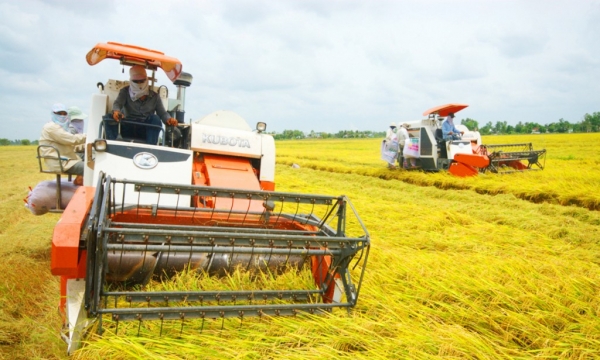
(VAN) The Multi-phase Approach (MPA) program aims to encourage client countries to invest in low-emission rice production.
/2024/05/15/1131-2-090733_559.jpg)
(VAN) The Vietnam Trade Office in Sweden said that the Northern European market has just added a number of regulations for imported cashew nuts.

(VAN) That is the decisive directive of the Chairman of the People's Committee of Vung Tau City in preventing IUU fishing violations in the locality.
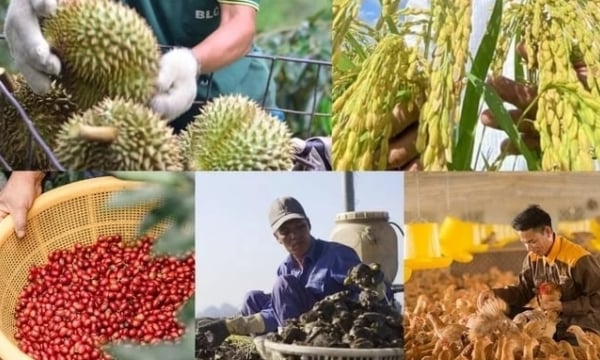
(VAN) The Government requestes ministries, departments and localities create favorable conditions, encourage farmers and agriculturists to study and increase their specialized levels.
/2024/05/12/1930-2-141548_348.jpg)
(VAN) Deputy Prime Minister Tran Luu Quang raised nine tasks and solutions for forces to prevent and overcome the consequences of natural disasters in the coming period at a conference on May 10.
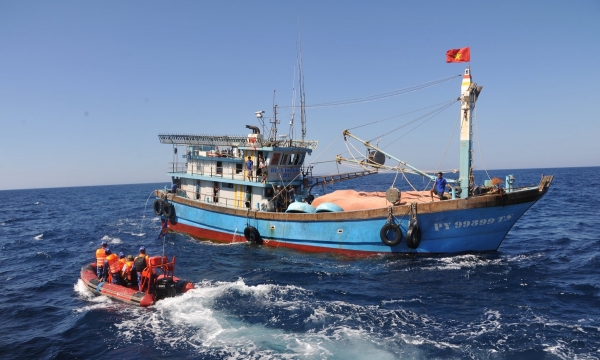
(VAN) The vission by 2050 is set on the Aquatic Resource Protection and Exploitation Planning in the period of 2021-2030, vision to 2050.
/2024/05/10/2117-1-230539_370.jpg)
(VAN) Households assigned sea surface must make the conversion from foam buoys to HDPE floating material. Any household that does not guarantee this will withdraw the decision to assign sea areas.